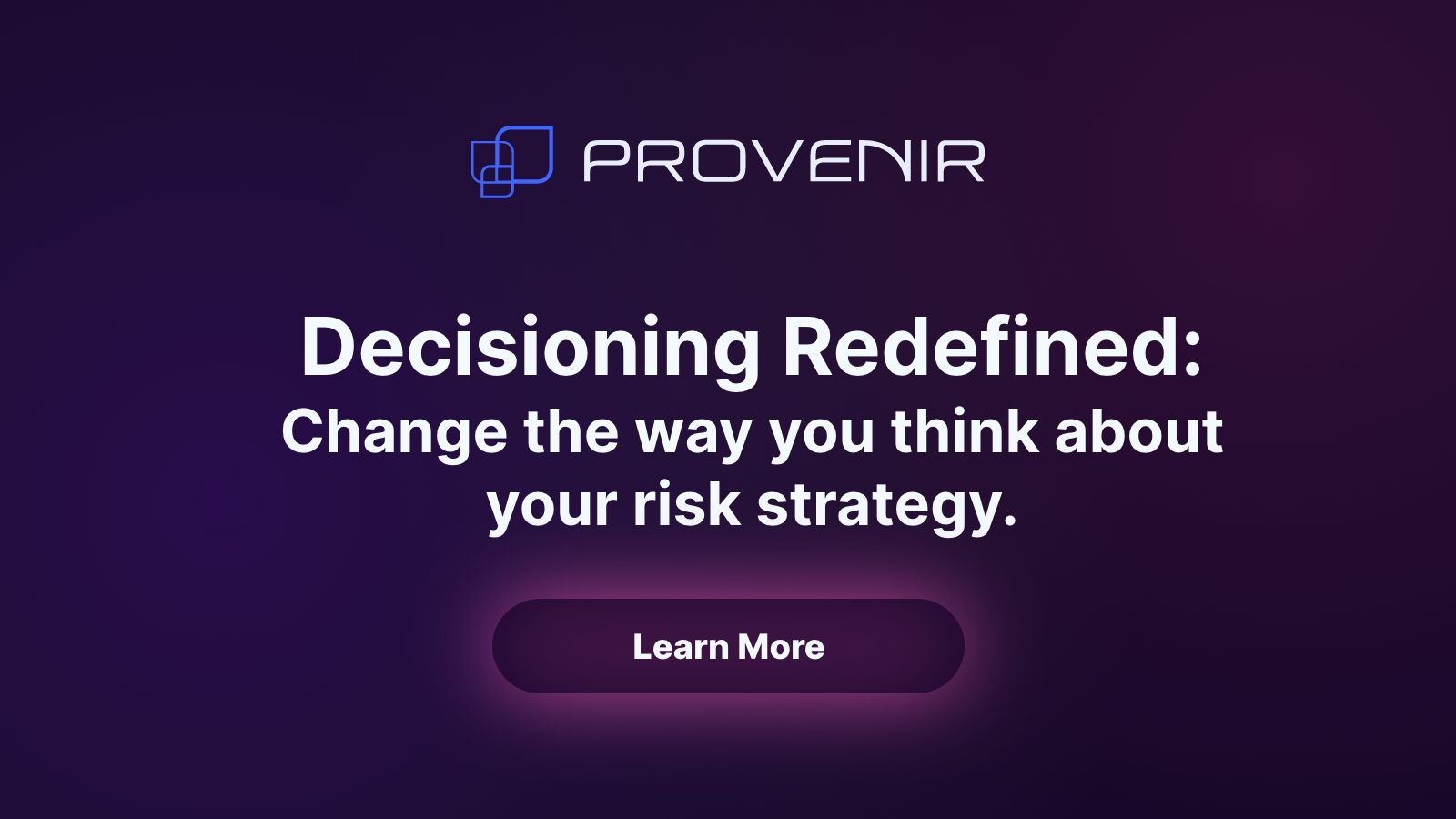The Essential Guide to Credit Underwriting
BLOG
The Essential Guide
to Credit Underwriting
What is Credit Underwriting?
Credit underwriting is when financial institutions (like banks, fintechs, credit unions or credit card companies) evaluate how creditworthy an individual or business is for the purpose of determining if they should be able to access credit. Typically, the credit underwriting process is kicked off when an individual consumer or a business applies for a form of credit, which could be anything from a credit card or business loan, to a mortgage or auto lease. The main objective of credit underwriting is determining how risky it is to lend to the applicant – in other words, how likely they are to pay back the loan or otherwise meet their credit obligations. A number of factors are usually considered when determining creditworthiness, including credit score, income, and debt ratio as examples. Credit underwriting evaluates the creditworthiness, but also helps determine the specific terms and conditions of the loan, including interest rates and credit limits.
What exactly is a Credit Underwriting Engine?
Sometimes referred to as a decision engine, or automated credit risk decisioning, a credit underwriting engine is a software application that automates the entire credit risk assessment process. It takes data from a variety of sources, including credit bureaus, bank statements, and alternative sources like social media profiles and utility payment info, and uses algorithms or risk models to analyze the data and generate a credit score or risk rating. This credit score or risk rating/profile is a way of determining an applicant’s creditworthiness. Based on the appliant’s overall risk profile and the parameters set out by the lender, it is then determined whether to approve or reject a particular credit application, and if approved, to set the specific terms of the loan.
In a nutshell, credit underwriting engines are computer programs that use data and risk models/algorithms to quickly assess the creditworthiness of loan applicants. They are becoming increasingly popular in the financial industry, especially among lenders who need (or want!) to process large volumes of credit applications quickly and accurately. In this guide, we will explain the key features and benefits of credit underwriting engines and offer some tips on how to choose the right one for your business.
Key Features of Credit Risk Underwriting
Some of the key features of automated credit risk underwriting processes include:
- Data Integration: The ability to pull data from a variety of sources, including credit bureaus, bank statements, and social media presence – which is key to more holistically assessing an applicant’s risk level.
- Data Analysis: The ability to analyze data using advanced algorithms and machine learning techniques to identify patterns and trends.
- Risk Assessment: The ability to generate a credit score or risk rating that reflects the applicant’s creditworthiness as determined by the particular parameters set out by the lender.
- Customization: The ability to customize the underwriting engine to meet the specific needs of the lender (which may include different criteria for a variety of product offerings, regions, etc.).
- Real-Time Decision Making: The ability to make real-time, accurate loan decisions based on the credit score or risk rating.
Benefits of Credit Risk Underwriting Engines
Credit underwriting engines offer several benefits to lenders, including:
- Increased Speed and Efficiency: Credit underwriting engines can process loan applications much faster than traditional underwriting methods, allowing lenders to say yes to more customers and grow their revenue.
- Improved Accuracy: Automated credit risk underwriting processes use advanced algorithms and machine learning techniques to analyze data, which reduces the risk of human error and improves the accuracy of loan decisions.
- Better Risk Management: Credit risk underwriting provides lenders with a more accurate assessment of the applicant’s creditworthiness, which helps them make better lending decisions and reduces the risk of defaults.
- Increased Customer Satisfaction: Automated credit underwriting provides faster loan decisions and a more streamlined application process, improving customer satisfaction and retention.
Choosing the Right Credit Underwriting Engine
hen choosing a credit underwriting engine, it is important to consider the following factors:
- Data Sources: Ensure you can easily integrate the data sources you need to make accurate lending decisions. Look for underwriting engines that can integrate a variety of types of data sources via a single API for maximum efficiency.
- Customization: Look for an underwriting engine that can be customized to meet the specific needs of your business, whether it’s customer thresholds, regional differences, or your particular variety of product offerings.
- User Interface: Choose an underwriting engine with a user-friendly interface that is easy to navigate and use, which will limit the amount of reliance on vendors or your IT team when you want to make changes to your decisioning workflows.
- Cost: Consider the cost of the underwriting engine and make sure it fits within your budget, but be sure to factor in the increased revenue from faster, more accurate risk assessments when looking at expected ROI versus initial investment.
- Technical Support: Can the underwriting engine provider offer technical support and training to ensure your team can use the software effectively?
A credit underwriting engine is a powerful tool for lenders looking to streamline the loan application process, whether for consumer lending or commercial credit underwriting and ensures more accurate lending decisions. They offer a range of benefits, including increased speed and efficiency, improved accuracy, better risk management, and increased customer satisfaction. If choosing the right partner seems daunting, consider the factors we’ve outlined when looking at providers. Above all else, look for a provider that can offer you seamless data integration and an easy-to-use interface so you can make changes quickly and easily as market needs and consumer demands evolve. Because if you aren’t meeting the needs of your loan applicants quickly, your competitors will.







